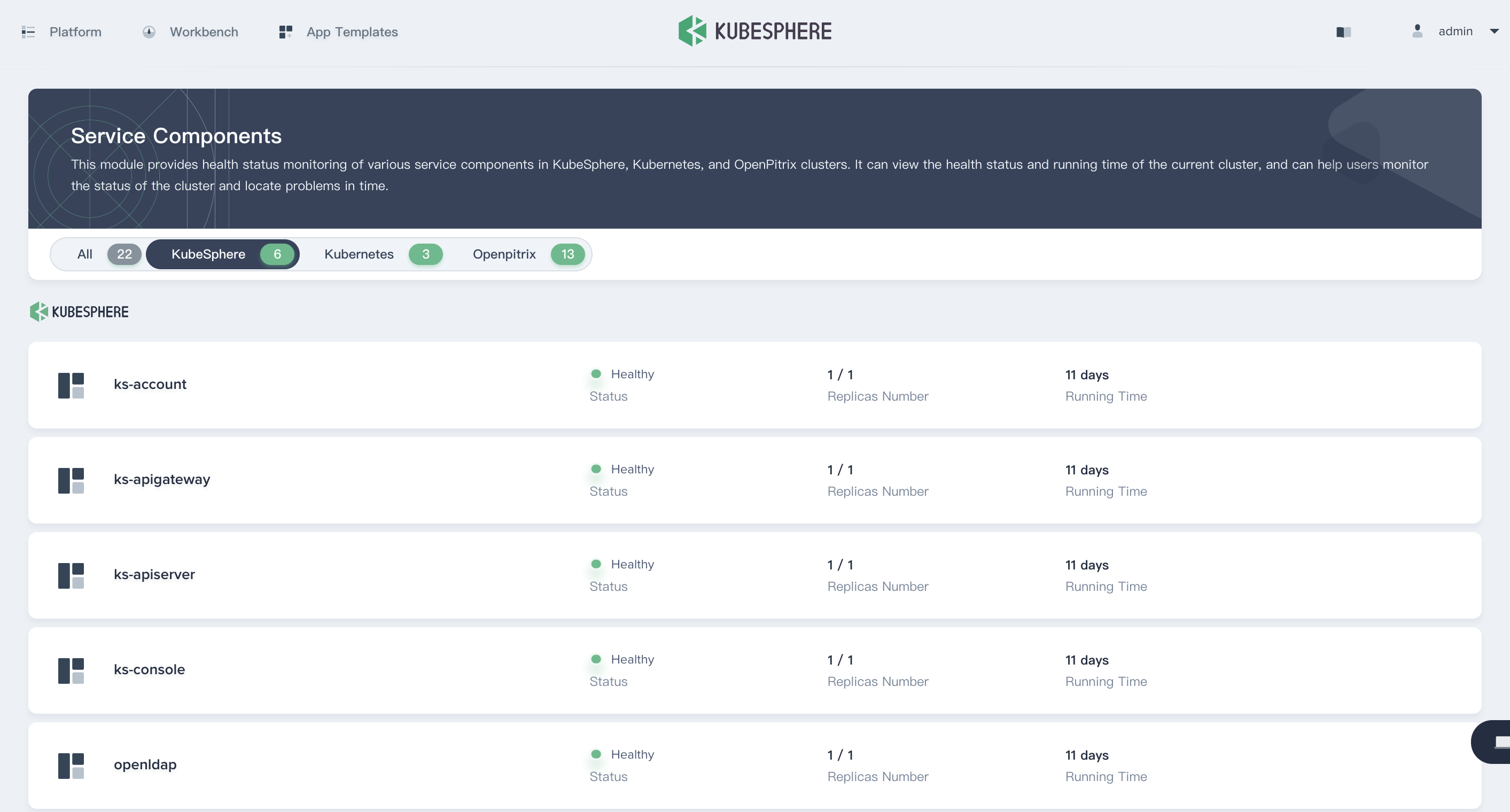Release Notes
Installation
Install on Linux
Install on Kubernetes
Pluggable Components
Upgrade
Third-Party Tools
Authentication Integration
Cluster Operations
Quick Start
DevOps
User Guide
Configration Center
Logging
Developer Guide
API Documentation
Troubleshooting
FAQ
Service Components
EditThe service components panel provides health status monitoring of various service components in the cluster, which can help cluster administrators to monitor the status of the cluster and locate problems timely.
Inspect the Service Component
Sign it with cluster admin, navigate to Platform Management → Service Components, then you can see the service components page.

As a cluster administrator, you can view all the service components of KubeSphere, Kubernetes and OpenPitrix.

The role of service component
The service component page supports view the current health status of the cluster, when there is an exception in the cluster, the cluster admin can quickly inspect if there is an exception in any of the service components.
For example, when the application is deployed with the application template, and the application is not successfully deployed, the cluster admin can check whether there is an exception in the component of Openpitrix, then proceed to locate the problem and inspect the logs and events, finally fix it according to the abnormal component. Each tab can also shows the number of exception components.